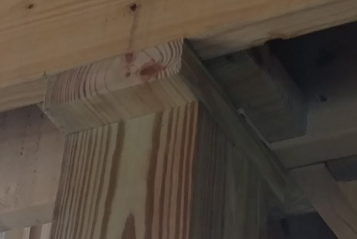jimtheengineer10
Civil/Environmental
See the attached picture.
A client is building a 2nd story where he will be able to have chairs/tables for pancake breakfasts. I am trying to determine what kind of load the existing beams can support. He installed a 2x10 with another one directly below it. He will be installing a 2x6 around the column so that will provide bearing underneath the stacked 2x10's. The tributary width is about 7.5'. I typically use the forte software for sizing beams/joists but I don't think this type of construction is an option with that software.
A client is building a 2nd story where he will be able to have chairs/tables for pancake breakfasts. I am trying to determine what kind of load the existing beams can support. He installed a 2x10 with another one directly below it. He will be installing a 2x6 around the column so that will provide bearing underneath the stacked 2x10's. The tributary width is about 7.5'. I typically use the forte software for sizing beams/joists but I don't think this type of construction is an option with that software.

![[idea] [idea] [idea]](/data/assets/smilies/idea.gif)
![[r2d2] [r2d2] [r2d2]](/data/assets/smilies/r2d2.gif)
![[bigsmile] [bigsmile] [bigsmile]](/data/assets/smilies/bigsmile.gif)
